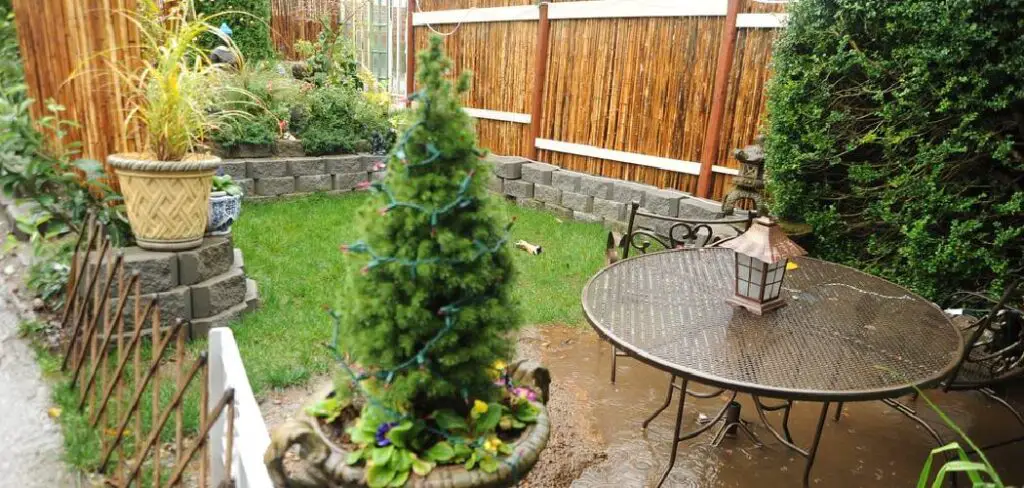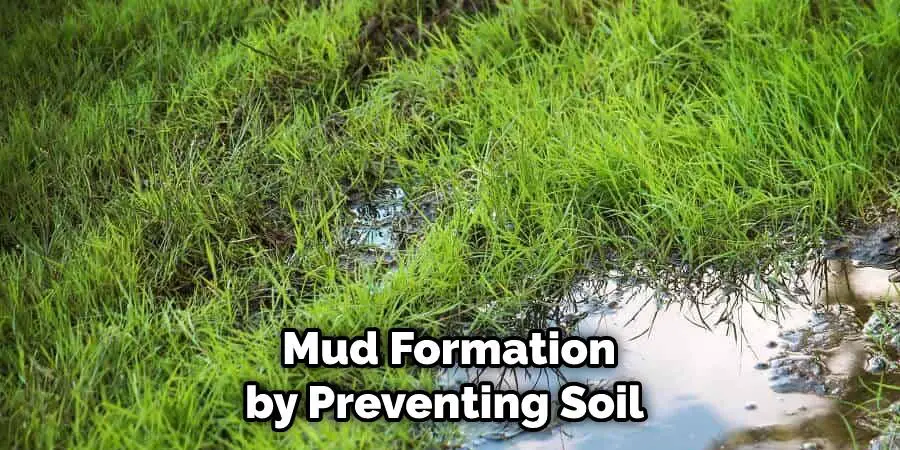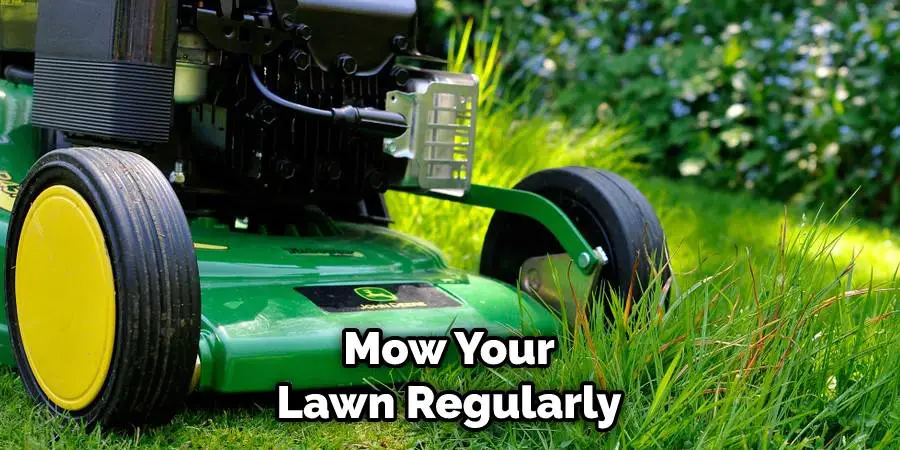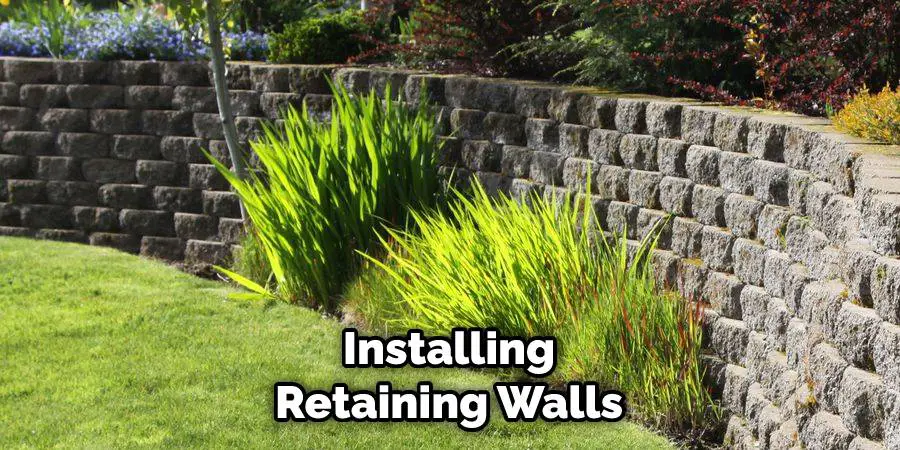Are you tired of dealing with a muddy backyard that’s ruining your landscaping? Not to worry, there are plenty of ways to prevent mud from forming and keep your lawn looking its best.

If you’re a homeowner with a backyard, chances are that muddy patches on your lawn are an annoyance. From the dreaded ‘mud season’ splashes to the inevitable clumps of mud created by kids and pets playing outdoors, it can be difficult to keep your garden neat and tidy – especially during the rainy months when things get really messy!
Fortunately, there are several ways to prevent muddy backyards, from installing natural covers such as mulch or gravel to artificial solutions like water-resistant turf designs.
In this blog post, we’ll discuss how to prevent muddy backyard from protecting your lawn and stopping muddy areas from forming in your backyard. Read on for more information!
What Will You Need?
To prevent a muddy backyard, you’ll need the following items:
- Mulch or gravel
- Organic soil amendment
- Groundcover plants
- Water-resistant turf designs
- Erosion control fabric
- Drainage solutions
- Artificial turf installation (optional)
Once you’ve gathered the necessary materials, you can begin implementing the steps needed to prevent mud from forming in your backyard.
10 Easy Steps on How to Prevent Muddy Backyard
Step 1. Mulching or Graveling Your Yard
One of the best ways to keep your yard clean is by covering it with a layer of mulch or gravel. This helps reduce mud formation by preventing soil particles from becoming saturated and mixing together during heavy rains. It also prevents weed growth, as mulch and gravel don’t allow weeds to take hold of your lawn. Finally, adding organic matter such as compost or manure helps improve soil drainage while providing essential nutrients for plants.

Step 2. Groundcover Plants
Another way to prevent muddy backyards is to plant groundcover plants like clover, creeping thyme, and English ivy. These plants help stabilize the soil with their dense root systems that bind together soil particles and hold them in place. This helps prevent erosion during heavy rains and keeps mud from forming.
Step 3. Water-Resistant Turf Designs
Using water-resistant turf designs such as permeable pavers or artificial grass can reduce muddy patches in your backyard. Permeable pavers allow for better rainwater drainage, while artificial grass eliminates the need for mowing or fertilizing and stays green all year round without needing any maintenance.
Step 4. Install Erosion Control Fabric
Erosion control fabric can be used to create a barrier between bare soil and mulch or gravel. This helps to prevent soil particles from becoming saturated with water and mixing together, which causes mud to form. You can also use this fabric to create pathways or other areas where mud is a problem.
Step 5. Invest in Drainage Solutions
Another important step how in preventing muddy backyards is investing in drainage solutions such as French drains or dry wells. This help keeps the ground from becoming overly saturated and reduces the risk of flooding during heavy rains. Another option is to install subsurface drainage systems, which allow for the water to be directed away from your lawn and into a designated area.
Step 6. Mow Your Lawn Regularly
One of the best ways to prevent mud patches on your lawn is by mowing it regularly. This helps ensure that grass blades are kept at a manageable length, reducing the amount of moisture trapped underneath them and preventing mud formation due to standing water in your yard. Be careful not to cut the grass too short, as this can cause other problems.

Step 7. Use Organic Soil Amendment
Organic soil amendment is essential to preventing mud in your backyard. This helps improve the quality of your soil and ensures that it can hold more water without becoming saturated and creating muddy patches. When adding a soil amendment, don’t forget to mix in plenty of organic matter, such as compost or manure.
Step 8. Install Artificial Turf (Optional)
If you’re looking for a low-maintenance option, consider installing artificial turf in your backyard. Not only does it look great all year round, but it also eliminates the need for mowing or fertilizing while still providing a manicured appearance with no risk of mud formation. If you go this route, use an underlayment beneath the turf to improve drainage and reduce the risk of flooding.
Step 9. Avoid Overwatering Your Lawn
It’s important to avoid overwatering your lawn as this encourages soil particles to become saturated and mix together, causing mud patches to form. Additionally, you should avoid watering your lawn during rainy periods, as this can cause the soil to become even more saturated and lead to further mud issues. If you are going to water your lawn, make sure to do it in the morning and always avoid overwatering.
Step 10. Regularly Inspect Your Property
Finally, it’s important to regularly inspect your property for signs of erosion or other damage that could be causing mud patches in your backyard. Be sure to act quickly if you notice any problems so that they don’t get worse over time and cause further damage.
It is also important to take steps to prevent erosion, such as installing retaining walls, terracing slopes, and adding mulch or gravel over bare soil.
By following these easy steps, you can keep your lawn looking great all year round without worrying about dealing with unsightly mud patches! Good luck!

5 Additional Tips and Tricks
- Install a grass barrier. Planting a grass barrier around the perimeter of your backyard can help keep mud and other dirt from entering the area.
- Create a footpath. Installing a gravel or stone walkway through your backyard can also help prevent mud and dirt from entering the area.
- Add drainage to landscaping beds. Installing drainage in any landscaping beds will help keep excess water from pooling and causing muddy spots in your yard.
- Plant ground cover plants. Planting ground cover plants like clover, thyme, and wild strawberries can help bind soil together to reduce mud puddles in your backyard.
- Install an artificial turf lawn. Replacing your natural grass with an artificial turf lawn is a great way of preventing muddy areas from forming since it won’t require watering or maintenance that could cause mud patches to form.
You can successfully prevent a muddy backyard by following these tips and tricks. With a little effort, you’ll soon have a neat and tidy outdoor space free from mud!
5 Things You Should Avoid
- Not installing a drainage system. Poor drainage and standing water can create perfect conditions for muddy yards. Install a French drain, buried pipe or surface pipe in your backyard to direct water flow away from problem areas.
- Not creating an outdoor space with permeable surfaces. Avoid hard surfaces like concrete or asphalt – which are not permeable and lead to puddling – and opt for pervious materials such as sand, gravel, or mulch instead.
- Ignoring how the land slopes around your yard contribute to mud season in many areas during the spring thaw or following heavy rains when the ground becomes saturated with water.
- Not using erosion control practices. Any changes to your property, such as clearing land or building a patio, can cause runoff and increase the chances of muddy messes in your backyard.
- Not investing in artificial grass. If you’re done trying to battle the mud with other preventative methods, you may want to consider making the switch over to an artificial turf lawn instead of natural grass – which will require less maintenance and no mowing!

With a few simple steps, you can ensure your backyard is free from mud and ready to enjoy all year round. Avoid these five common mistakes, and you’ll be well on your way toward a cleaner and better-looking outdoor space!
Conclusion
The best way to keep your backyard from turning into a muddy mess is by making sure that it is properly drained and maintained. Mulching, maintaining healthy grass, and using the right plants for your soil can help prevent mud problems.
Furthermore, watering at the right times of day and correctly circulating air can go a long way toward keeping your backyard dry and clean. You should also keep debris away from areas that are prone to mud formation and avoid walking through the wet ground if possible.
Taking these measures will ensure you can enjoy your outdoor space without worrying about painfully muddy conditions ruining your plans. Ultimately, preventing a muddy backyard is easier said than done, but with some effort and dedication, you’ll be able to keep your backyard looking pristine in no time.
Hopefully, the article on how to prevent muddy backyard was Helpful. Thanks for reading!
About
Outdoor Fixes is a distinguished figure in the world of Diy design, with a decade of expertise creating innovative and sustainable Diy solutions.
His professional focus lies in merging traditional craftsmanship with modern manufacturing techniques,
fostering designs that are both practical and environmentally conscious. As the author of diy,
outdoorfixes delves into the art and science of outdoorfixes-making, inspiring artisans and industry professionals alike.
Education RMIT University
(Melbourne, Australia) Associate Degree in Design (Outdoor Fixes) Focus on sustainable design, industry-driven projects,
and practical craftsmanship. Gained hands-on experience with traditional and digital manufacturing tools, such as CAD and CNC software.
Nottingham Trent University
(United Kingdom) Bachelor’s in outdoorfixes.com and Product Design (Honors) Specialized in product design with a focus on blending creativity with production
techniques. Participated in industry projects, working with companies like John Lewis and Vitsoe to gain real-world insights.
Publications and Impact
In diy, Outdoor Fixes his insights on indoor design processes, materials, and strategies for efficient production.
His writing bridges the gap between artisan knowledge and modern industry needs, making it a must-read for both budding designers and seasoned professionals.

